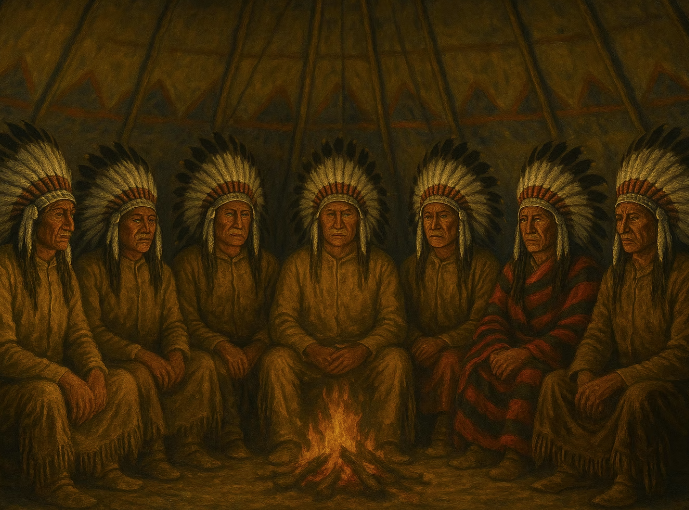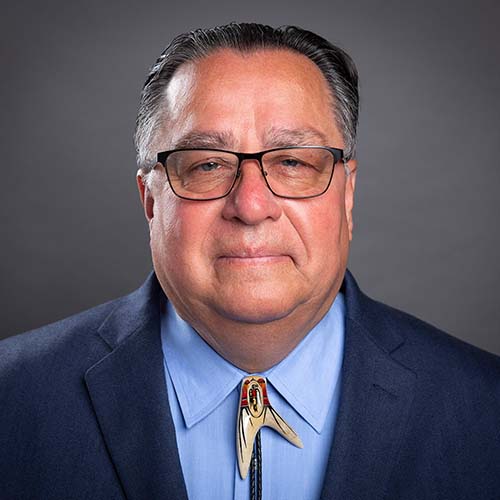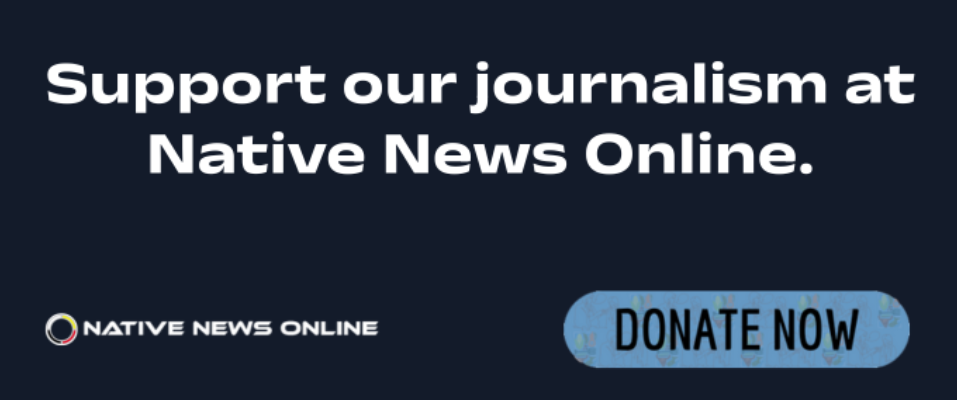
- Details
- By Native News Online Staff
The Oceti Sakowin Treaty Councils issue this urgent call to all Lakota people, communities, and leadership: it is time to launch large-scale emergency operations to rescue and restore the Lakota language. The Councils recognize that our language is the living heart of our Nation, and without decisive action, it stands on the brink of irretrievable loss.
Lakota Iyapi (to speak): The First Source of Inherent Sovereignty
The Lakota Iyapi (Voice) is the very first source of our inherent sovereignty. It is how we remain close to our ancestors, our Unci and Tunkasila of long ago. We have walked this earth for millions of years, but today we face the near end of our sacred language.
Lakota Iyapi is not only the way we communicate with one another, but also the way we speak with the powers of creation. Without our language, there will be an unbearable silence. Everything that makes us Lakota—our woope customary laws, our Wolakota laws of peace, our traditional knowledge and worldview—lives within our Iyapi. The young generation needs this language, for from it comes all that sustains us.
UNESCO Classification: A Nearly Extinct Language
According to UNESCO’s “Language Vitality and Endangerment” framework, the Lakota language falls within the range of the most endangered categories. UNESCO defines a critically endangered language as one where the youngest speakers are grandparents and older, who use the language only partially and infrequently. By these global standards, Lakota is nearly extinct.
This recognition underscores the urgency of immediate, unified action: without intergenerational transmission, our voice will be forever silenced.
Emergency Mobilization of the Lakota Oyate (Nation)
We call upon all Lakota families, schools, elders, cultural institutions, and community programs to take immediate and coordinated steps to immerse our people in Lakota language every day. Our ancestors signed treaties to protect our way of life; today, that sacred duty includes defending our language with the same resolve.
The Treaty Councils urge tribal governments, organizations, and communities to treat this as a national emergency and to commit resources, time, and energy toward total immersion initiatives.
Direct Appeal to Tribal IRA Governments
The Treaty Councils strongly advise all tribal IRA governments to dedicate a significant percentage of incoming federal funds, in the form of contracts and grants, to language survival and full immersion. Language programs must not remain underfunded or peripheral—they must become central to tribal governance and community life.
We specifically recommend:
- Create Tribal Language Institutions or Departments: Each tribe should establish a permanent entity, with full staff and authority, dedicated to assessing and coordinating Lakota language immersion at all levels of tribal government.
- Contracts and Grants: Allocate sustained funding streams to Lakota language schools, immersion nests, and teacher training programs.
- Workforce Commitment: Require all tribal departments and employees to set aside a minimum of one hour per day for Lakota immersion, ensuring that language use is embedded across every level of governance and daily operations.
- Tribally Chartered Entities: Ensure that tribally chartered entities and nonprofits within the 1851 and 1868 Fort Laramie Treaty boundaries also commit to language immersion policies and programming.
- Template Law: The Treaty Council will draft a model law for adoption on each reservation, establishing binding commitments to language preservation, immersion, and intergenerational transmission.
- Community Integration: Create spaces where Lakota language is prioritized in ospaye (community), business, governance, ceremonies, and daily exchanges.
Protecting the Spirit of the People and the Treaties
The loss of our language would mean the loss of our identity, worldview, and spiritual lifeways. The Treaty Councils remind all Lakota that we are bound by sacred obligation to protect the gifts of our ancestors and ensure their survival for future generations.
Even the United States Supreme Court has recognized that treaties must be understood as our grandfathers understood them at the time they were written. This principle affirms that our language, our worldview, and our understanding of the treaties are inseparable.
This call is not optional. It is a directive grounded in treaty law, cultural survival, and the inherent sovereignty of the Oceti Sakowin. We must act together, now, to ensure the Lakota language continues to live and thrive.
More Stories Like This
50 Years of Self-Determination: How a Landmark Act Empowered Tribal Sovereignty and Transformed Federal-Tribal RelationsTreasury Finalizes Tribal Tax Rules Ending Decades of Uncertainty
Finalized Tax Rules Seen as Historic Win for Tribal Economies
Cherokee Nation Launches Digital Dictionary to Support Language Revitalization
Prairie Band Potawatomi Nation Chairman Addresses Homeland Security Contract
Help us defend tribal sovereignty.
At Native News Online, our mission is rooted in telling the stories that strengthen sovereignty and uplift Indigenous voices — not just at year’s end, but every single day.
Because of your generosity last year, we were able to keep our reporters on the ground in tribal communities, at national gatherings and in the halls of Congress — covering the issues that matter most to Indian Country: sovereignty, culture, education, health and economic opportunity.
That support sustained us through a tough year in 2025. Now, as we look to the year ahead, we need your help right now to ensure warrior journalism remains strong — reporting that defends tribal sovereignty, amplifies Native truth, and holds power accountable.
 The stakes couldn't be higher. Your support keeps Native voices heard, Native stories told and Native sovereignty defended.
The stakes couldn't be higher. Your support keeps Native voices heard, Native stories told and Native sovereignty defended.
Stand with Warrior Journalism today.
Levi Rickert (Potawatomi), Editor & Publisher


